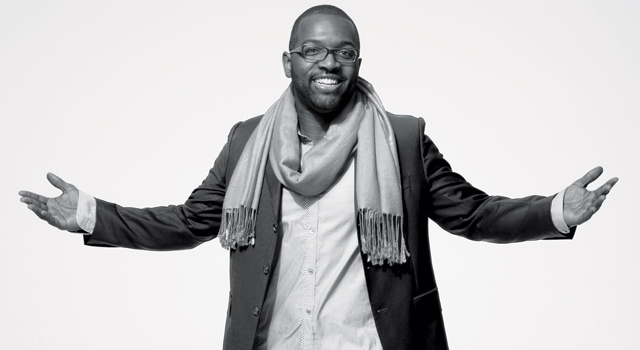
Photo by Brooke Nipar
Follow Fast Company's roadmap to social media: surefire rules, data, and expert wisdom guaranteed to show why this market is completely unpredictable.

I almost ruined my company's brand on Twitter. As The Onion's director of digital, I'd been testing Twitter on myself for a year before I launched @TheOnion in March 2008. Shortly thereafter, Twitter added us to its Suggested User List, which made our follower count and my ego explode. Then, on May 19, I activated the Tweetlater service to help schedule certain posts. I also enabled a feature that automatically thanked each new follower. I put some dark joke in there that I cannot remember, but trust me: It was clever and awesome. Our followers would be hooked.
I flipped the switch on Tweetlater, then left the office to attend a political fundraiser, patting myself on the back for another digital strategy job well done. But something wasn't right. My iPhone began buzzing incessantly from inbound Twitter alerts. Hundreds of people were complaining that @TheOnion was spamming their timelines. Then I realized my mistake: I had set the gratitude bot to thank individual followers publicly, rather than in private. We were flooding our thousands of followers with scores of duplicated tweets. As I realized the scale of my mistake, my phone stopped working altogether. The iPhone sadly lacks the ability to process a constant stream of hate-filled text messages. I raced home, a 45-minute journey, to unplug the brand-destroying doomsday device, but I was too late. For a day at least, I turned The Onion into a social media joke akin to its own headline "New Social Networking Site Changing the Way Oh, Christ, Forget It."
Saving me from complete embarrassment was the fact that in May 2008, not as many people cared about Twitter as today, so there weren't very many witnesses to my crime. Since then, the stakes have gotten much higher. For organizations, brands, and individuals, social media has become mainstream with a multitude of platforms, assumptions, and expectations--all sucking away ever-larger slices of marketing budgets, even though the payoff isn't always clear. As Occupy protesters often chant during police raids, the whole world is watching. But what do we see? We're not even sure. We gather at conferences and ask each other, again, "Is it the regime-toppling, rights-bolstering, community-enabling conversational sales channel we've been promised?"--and those questions still feel new and compelling, because nobody has a good answer.
Twitter is a medium of adorable baby photos and adorable cat photos and adorable baby cat photos. And on top of this, brands have amassed a layer of well-paid social media experts--consultants! executives!--who are tasked with transforming brands into friends. For companies that see this new frontier as a marketing opportunity (and that's basically all of them), it is a thin line between relevant and creepy stalker. You want to be where the conversation is and join it in an "authentic" way, but just because someone is talking about your product does not mean he wants to talk about it with you. Should every human gathering place be targeted for interactive marketing campaigns? How would you feel if you and your friends were out dining, discussing Game of Thrones, and an HBO executive suddenly joined your table screaming, "Winter is coming!"
I sympathize with the marketer's lament for a simpler time when you could just buy some TV ads a year in advance, drink a few martinis, sexually harass your secretary, and go home. Even five years ago, a home-page stunt or takeover might have sufficed. Today, the platforms you "need to be on" change every few weeks. Facebook Groups are out and Pages are in. No, Pages are out and Subscriptions are in. Tumblr is the new black, and email is actually the best social network. Tom from MySpace has returned . . . on Facebook. And what on earth is your Pinterest strategy? Oh, you don't have one? Congratulations, you just unlocked the Irrelevant Businessperson Badge on Foursquare.
Even figuring out your platform of choice doesn't provide much comfort or stability because the platforms don't want to share all their rules and methods out of well-placed fear that some of you will abuse that knowledge. Or, maybe they don't even know themselves. Social media services seem torn between protecting their users, empowering their users, selling out their users, and annoying everyone.
Now, try measuring that. What is success? Impressions? Clicks? Mentions? Sales? Viewers? Some new unit based on a dopamine meter and backdoor API installed in the user's hypothalamus? Yes! Let's call that metric "feelies."
For a conversational medium about which there is so much conversation, social media offers so little clarity. Through the voices of the CMOs, brand managers, business-development execs, ad-agency ninjas, and others on the social front lines every hour of every day, we present what we hope is the beginning of a better, dare I say, more authentic conversation about the social media business today. So please, read it all, and if you like it, well, then "like" it and retweet, reblog, +1, pin, stumble, forward, print, and fax it to all your "friends."
DIGITAL JUICE
No comments:
Post a Comment
Thank's!